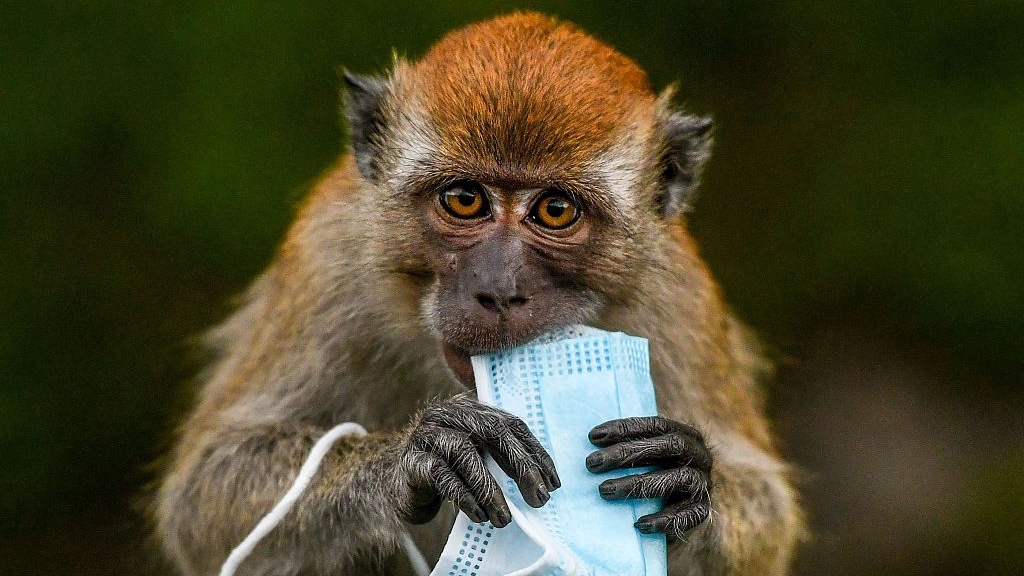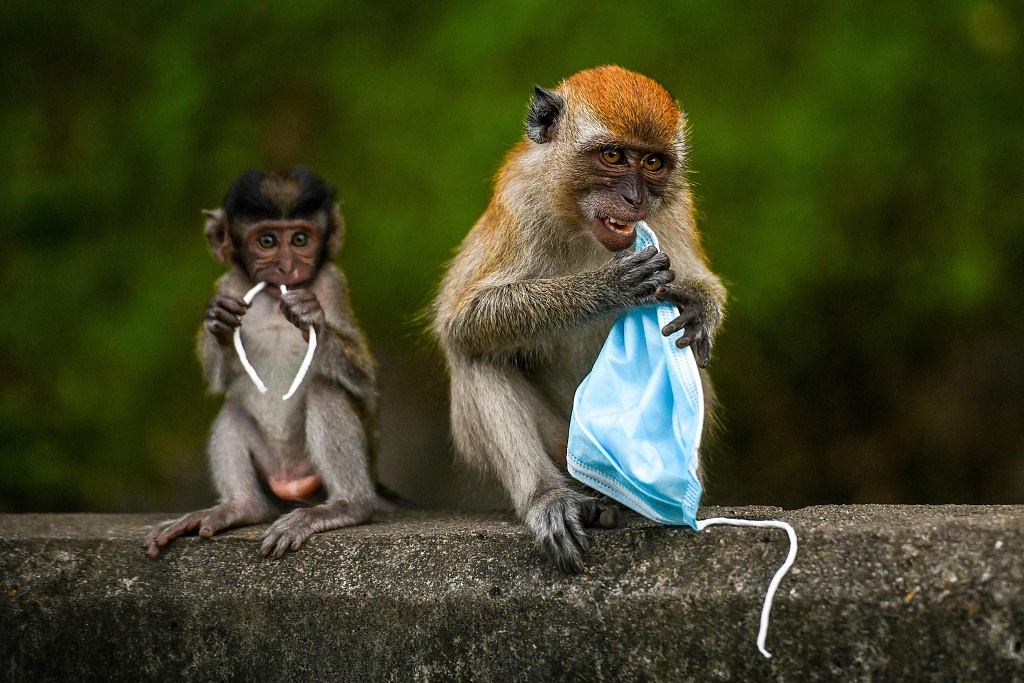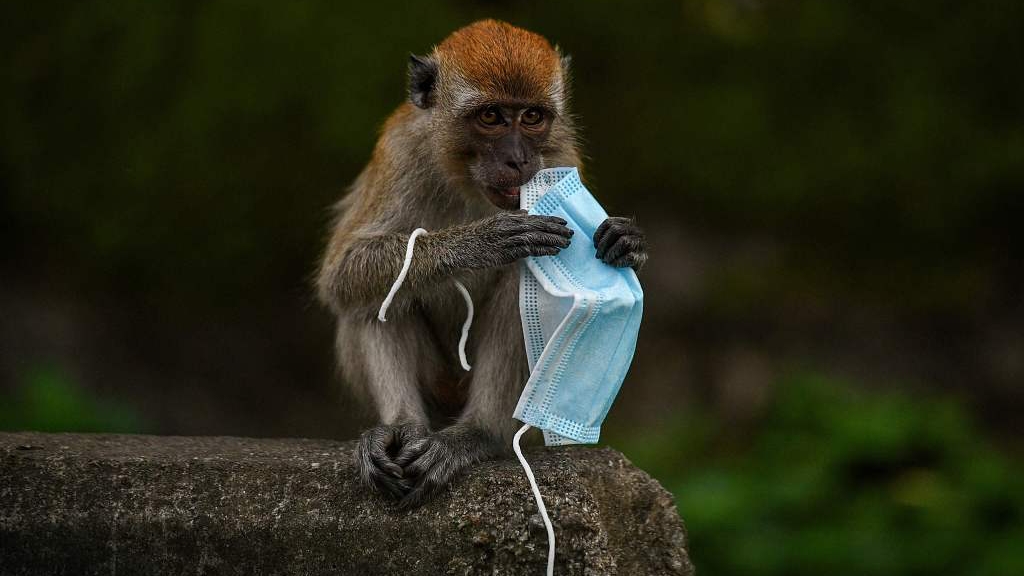
A macaque monkey attempts to eat a face mask, used as a preventive measure against the spread of the COVID-19, left behind by a passerby in Genting Sempah in Malaysia’s Pahang state on October 30, 2020. /CFP
A macaque monkey attempts to eat a face mask, used as a preventive measure against the spread of the COVID-19, left behind by a passerby in Genting Sempah in Malaysia’s Pahang state on October 30, 2020. /CFP
Masks that helped save lives during the coronavirus pandemic are proving a deadly hazard for wildlife, with birds and marine creatures ensnared in the staggering number of discarded facial coverings littering animal habitats.
Single-use surgical masks have been found scattered around pavements, waterways and beaches worldwide since countries began mandating their use in public places to slow the pandemic's spread.
Worn once, the thin protective materials can take hundreds of years to decompose.

This picture taken on October 30, 2020 shows macaque monkeys attempt to eat parts of a face mask in Genting Sempah in Malaysia's Pahang state. /CFP
This picture taken on October 30, 2020 shows macaque monkeys attempt to eat parts of a face mask in Genting Sempah in Malaysia's Pahang state. /CFP
Macaques have been spotted chewing the straps off old and tossed-aside masks in Malaysia – a potential choking hazard for the diminutive monkeys.
And in an incident that captured headlines in Britain, a gull was rescued by the Royal Society for the Prevention of Cruelty to Animals (RSPCA) in the city of Chelmsford after its legs became tangled in the straps of a disposable mask for up to a week.
The animal welfare charity was alerted after the bird was spotted, motionless but still alive, and they took it to a wildlife hospital for treatment before its release.
"It's clear the mask was there for some time and the elastic straps had tightened around his legs as his joints were swollen and sore," said RSPCA inspector Adam Jones.

This picture taken on October 30, 2020 shows a macaque monkey playing with a face mask in Genting Sempah in Malaysia's Pahang state. /CFP
This picture taken on October 30, 2020 shows a macaque monkey playing with a face mask in Genting Sempah in Malaysia's Pahang state. /CFP
The biggest impact may be in the water, with green groups alarmed at the flood of used masks, latex gloves and other protective gear finding their way into already contaminated seas and rivers.
More than 1.5 billion masks made their way into the world's oceans last year, accounting for around 6,200 extra tons of marine plastic pollution, according to environmental group OceansAsia.
Already there are signs that masks are worsening threats to marine life.
Conservationists in Brazil found one inside the stomach of a penguin after its body washed up on a beach, while a dead pufferfish was discovered caught inside another off the coast of Miami.

An abandoned mask on the street. /CFP
An abandoned mask on the street. /CFP
French campaigners Operation Mer Propre found a dead crab ensnared in a mask in a saltwater lagoon near the Mediterranean in September.
Masks and gloves are "particularly problematic" for sea creatures, says George Leonard, chief scientist from U.S.-based NGO Ocean Conservancy.
"When those plastics break down in the environment, they form smaller and smaller particles," he added, "those particles then enter the food chain and impact entire ecosystems."
There has been a shift towards greater use of reusable cloth masks as the pandemic has worn on, but many are still opting for the lighter single-use varieties.
Campaigners have urged people to bin them properly and snip the straps to reduce the risk of animals becoming ensnared.
OceansAsia has also called on governments to increase fines for littering and encourage the use of washable masks.
(All images via CFP.)
(If you want to contribute and have specific expertise, please contact us at nature@cgtn.com.)
Source(s): AFP

